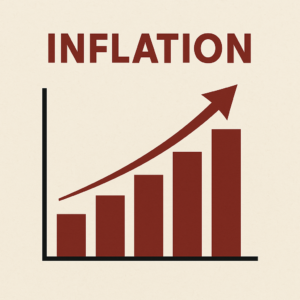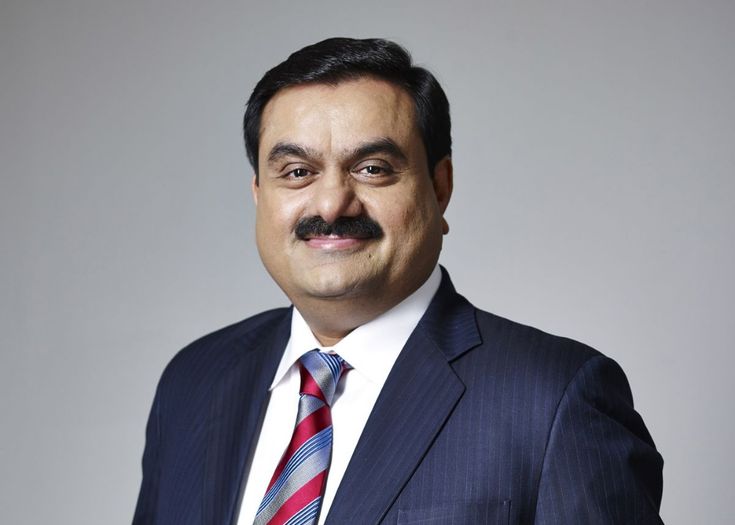Inflation is a critical indicator of economic health, affecting consumers, businesses, and policymakers. Below is a step-by-step breakdown of U.S. inflation trends, drivers, and future outlook.

Inflation isn’t a monolith—it’s fueled by distinct forces:
- Demand-Pull: Post-COVID stimulus (e.g., CARES Act, American Rescue Plan) flooded the economy with cash, boosting consumer spending. By 2025, this effect has likely waned, but robust employment (unemployment near 4%) keeps demand steady.
- Cost-Push: Energy prices, though off their 2022 highs, remain sensitive to geopolitical risks (e.g., Middle East tensions, Russia-Ukraine war). Labor shortages in key sectors—think trucking or construction—push wages up, feeding into service costs.
- Supply Shocks: The pandemic exposed supply chain fragilities. While bottlenecks (e.g., semiconductor shortages) have eased, climate events or trade disruptions (e.g., tariffs, Red Sea shipping issues) can still spike prices for specific goods.
- Money Supply: M2 (cash, checking, and savings accounts) ballooned during 2020-2021. The Fed’s aggressive rate hikes since 2022 shrank this, but the lag effect means inflation’s stickiness persists into 2025.
Inflation’s 2021-2022 surge was the highest since the early 1980s, when Paul Volcker’s Fed crushed double-digit rates with 20% interest hikes.
Today’s levels aren’t that extreme, but they exceed the Fed’s 2% target, a benchmark since the 1990s.
Pre-pandemic, inflation rarely topped 2%, thanks to globalization and tech-driven efficiency. The 2020s shift reflects a “deglobalization” trend—reshoring, trade barriers—and a hotter labor market.
The Federal Reserve, led by Jerome Powell (assuming he’s still chair in 2025), has been the inflation firefighter. After slashing rates to near-zero in 2020, it pivoted to hikes in 2022-2023, peaking the federal funds rate at 5.25%-5.5%. By now, with inflation trending down, the Fed might have cut rates modestly—say, to 4.5%-4.75%—balancing growth and price stability. Quantitative tightening (shrinking the Fed’s $9 trillion balance sheet) continues, but at a slower pace.
Fiscal Policy and Government Role
Congress and the White House shape inflation too. Biden’s $1.9 trillion American Rescue Plan (2021) and Infrastructure Act fueled demand, while the Inflation Reduction Act (2022) aimed at green investment—mixed effects on prices. If a new administration took over in 2025, policy shifts (e.g., tax cuts, deregulation) could reignite demand-side pressures. Deficits, with national debt topping $34 trillion, raise long-term inflation risks if borrowing costs spike.
U.S. Inflation – Sectoral Breakdown
Housing (Shelter Costs)
Shelter accounts for about 33% of CPI, making it the single biggest driver. It includes rent, owners’ equivalent rent (OER—what homeowners would pay to rent their own homes), and related costs.
By 2025, housing inflation likely remains elevated but is cooling from its 2022-2023 peak (when shelter CPI hit 8%+). Rents in urban hotspots (e.g., New York, Miami) have softened as new multifamily units come online—construction boomed after pandemic delays. Zillow data might show median rents up 3%-4% year-over-year, down from 10%+ in 2022. Home prices, tied to 30-year mortgage rates (say, 5.5%-6% now vs. 7.5% in 2023), grow more slowly, maybe 2%-3% annually per Case-Shiller.
upply lags demand—decades of underbuilding (post-2008 crash) mean a housing shortage persists, estimated at 3-4 million units. Labor and material costs (e.g., lumber, concrete) stabilized but haven’t reversed. Fed rate cuts ease borrowing, but high insurance costs in climate-risk zones (Florida, California) add pressure.Sticky shelter inflation keeps core CPI from dropping below 3%. For households, rent hikes outpace wage gains for many, squeezing budgets—especially for younger renters or fixed-income retirees.
Energy
Energy (electricity, gasoline, natural gas) is ~7%-8% of CPI but punches above its weight due to volatility and ripple effects (e.g., transport costs).
Assume oil prices hover at $70-$90 per barrel (West Texas Intermediate), reflecting OPEC+ production tweaks and steady U.S. shale output. Gasoline averages $3.30-$3.60/gallon nationally, down from $5 peaks in 2022 but above pre-COVID $2.50. Electricity costs rise modestly (3%-5% annually), driven by grid upgrades and renewable transitions. Natural gas, after 2022’s Ukraine-war spike, stabilizes but fluctuates with winter demand.Geopolitics is key—tensions in the Middle East or Russia’s energy leverage can jolt prices. Domestically, Biden-era green policies (or a shift under a new administration) push utilities toward renewables, raising short-term costs. Refinery capacity, still tight post-pandemic, limits gas price relief.
Energy inflation’s cooled from its 2022 dominance (when it hit 40%+ year-over-year), but it’s a wildcard. Higher transport costs feed into goods prices, while utility bills hit low-income households hardest—think heating costs in the Northeast.
Food
Food (at home and away) is ~13%-14% of CPI, split between groceries and dining out.Grocery inflation likely sits at 2%-3% year-over-year, a sharp drop from 2022’s 11%+ surge (remember $6 egg cartons?). Dining out rises faster, maybe 4%-5%, as restaurants pass on labor and rent costs. Specific spikes—beef up 5% (drought-thinned herds), coffee up 6% (climate hits to Brazil’s crop)—contrast with flat prices for staples like bread or milk.
Inflation redistributes wealth. Savers lose as cash devalues; debtors gain as loans shrink in real terms. Low-income households, spending more on essentials, feel the pinch most—think 2022’s “eggflation” or gas price memes. Businesses face margin squeezes if costs outpace price hikes, though corporate profits have held up, fueling “greedflation” debates.
Growth-wise, high inflation can choke GDP if rates overshoot, but 2025’s milder pace likely supports 2%-2.5% growth. The Phillips Curve (inflation vs. unemployment tradeoff) feels less relevant—low unemployment and moderate inflation coexist, challenging old models.
inflation could stabilize near 2.5%-3% if:
- Supply chains stay resilient.
- Energy markets avoid shocks.
- Wage growth moderates without a labor glut.
Risks include:
- Geopolitical: A China-Taiwan flare-up or OPEC cuts could spike costs.
- Policy Missteps: Fed overtightening might tip into recession; too-loose policy could rekindle inflation.
- Expectations: If consumers and firms expect higher inflation, it becomes self-fulfilling via price-wage spirals.
As of April 8, 2025, U.S. inflation is a tamed beast but not fully domesticated. It’s less about 2022’s runaway train and more about a stubborn plateau—manageable yet above the Fed’s comfort zone. The economy’s juggling act—growth, jobs, prices—leans on deft policy and a bit of luck.



